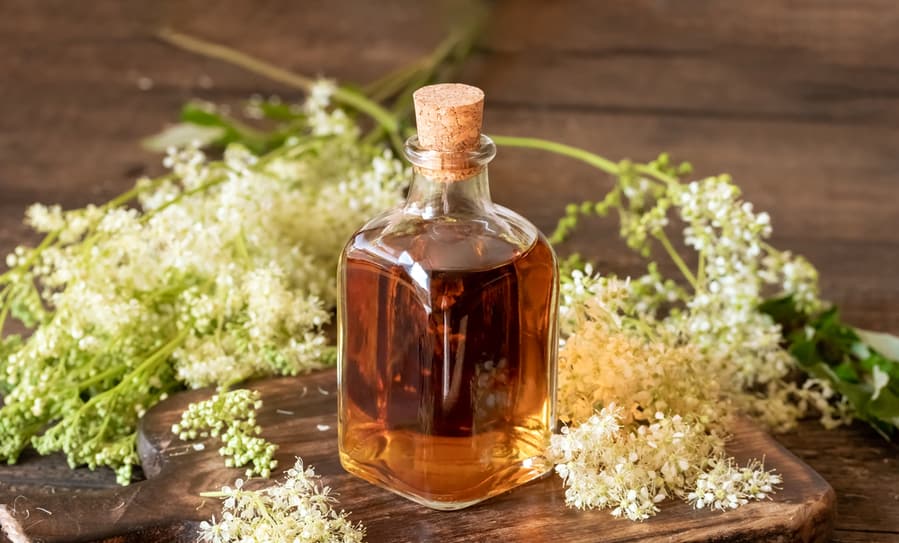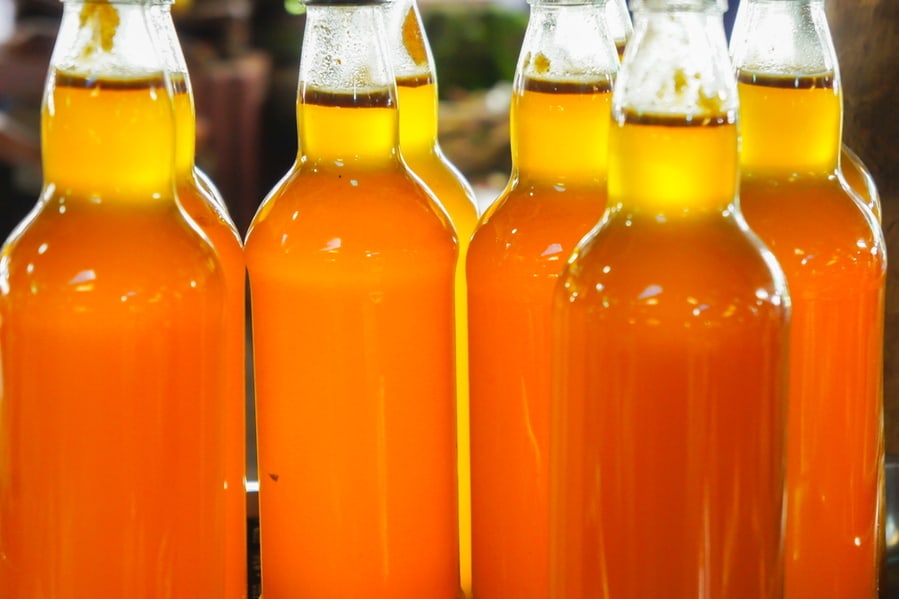
If you watch Game of Thrones or Vikings, you’ve probably come across mead a few times. This beverage is popular in history books, historical fiction, and movies and TV shows in the medieval and Renaissance period.
Did you know that in Game of Thrones, casks of mead were served by House Frey during the Red Wedding? Flagons of mead were also served at King Joffery’s wedding. Okay, let’s leave the fantasy world. What exactly is mead?
In the simplest words, mead, also called honey wine, is a fermented honey beverage where the primary source of sugar comes from honey.
Honey is too dense to ferment on its own because it’s high in sugar and low in moisture. However, honey contains yeast, one of the main facilitators of fermentation.
Add a large amount of water to honey in a large container, let it ferment into alcohol and carbon dioxide, and yeast is born.
Continue reading as we talk about the history of mead and everything you need to know about this beverage.
The History of Mead

Mead has been consumed since ancient times, with the earliest written records of it being found in ancient Greece and China.
Some say mead is 4000 years old. Others say mead is over 20000 years old with African origins, I guess we’ll never know for sure. What we do know is mead is old, the oldest alcoholic beverage in the world, in fact.
Mead was an important part of many cultures, and it was believed to have magical properties. It was often used to mark special occasions, such as weddings and funerals. In some cultures, mead was even said to give people strength and courage.
The earliest records of mead production come from ancient Greece, where it was called “hydromeli.” This drink was popular among the ruling classes and was enjoyed at feasts and celebrations.
In the Middle Ages, mead was a popular beverage throughout Europe. It was especially popular in England, where it was known as “metheglin” or “honey beer.”
In England, mead was often served at weddings and other special occasions. It was also used to treat illnesses and as an ingredient in certain herbal remedies.
In the late 16th century, mead production began to decline in Europe as beer and wine became more popular. Grapes were a far cheaper way to make wine, and they were readily available. However, mead remained popular in some parts of the world, such as Africa and South Asia.
In the 20th century, mead experienced a revival in the United States. This revival was partly driven by a renewed interest in traditional alcoholic beverages, as well as the growing popularity of home brewing.
Today, mead is becoming increasingly popular in the United States, as well as other parts of the world. Mead is still made today in a variety of styles, including dry, sweet, and sparkling. It is also often flavored with spices, fruits, and herbs.
Types of Mead

There are many different types of mead, each with its own special name. However, they all have one ingredient in common–honey. Let’s explore some of these types of mead and what they consist of.
Traditional mead: this is what most people refer to when they say mead. It’s the oldest form of mead made from honey, water, and yeast alone. It can be sweet, dry, or in between.
Also called Show Mead, traditional mead is the hardest to make. Since you aren’t adding any ingredients to spice it up, you can’t hide bad mead-making or bad honey.
Metheglin mead: this is mead infused with herbs, spices, or both. The spices can range from cinnamon, nutmeg, and cloves to more exotic ones like cardamom and anise. Metheglin mead is usually a bit sweeter than traditional mead.
Melomel mead: this is a fruity mead or mead made with honey and fruit juices or purees. Fruits add tartness to the mead to create a sweeter, fruitier, or citrusy flavor depending on the fruit you use.
Bochet mead: this is known as burnt mead. It’s mead in which some or all of the honey has been burned or caramelized. Honey is heated to a certain temperature for long enough to bring out the caramel flavor, not literally burned.
Bochetomel: this is burnt mead with added fruit.
Capsicumel: this is mead flavored with peppers. Any kind of pepper can be used.
Cyser: this is mead from honey and apple juice fermented together.
Hydromel: this is what mead is called in France, but in the US and some other countries, this is used to refer to low-alcohol mead.
Sack mead: this refers to higher-alcohol mead. It has more honey, hence more alcohol, usually over 14% ABV.
This isn’t an exhaustive list of the types of mead, but these are some of the most common terms you’ll see on the internet.
Benefits of Drinking Mead

- Mead is a naturally low-alcohol beverage, making it a healthier option than many other alcoholic drinks. Honey is a natural source of antioxidants and vitamins, which can help protect the body from the damaging effects of alcohol.
- Mead also contains probiotics, which can help to improve digestion and boost the immune system.
- Mead is an excellent choice for those looking for an alternative to beer or wine. It has a light, sweet flavor that can be enjoyed on its own or mixed with other drinks and ingredients. Many meaderies also offer a wide range of flavors and styles, allowing drinkers to explore different types of mead and find one that suits their tastes.
Brewing Your Own Mead

Brewing your own mead is a fun and rewarding experience. There are so many things you can experiment with. Here are the steps to follow to brew your own mead.
- Gather Ingredients: Start by gathering all of the necessary ingredients for brewing mead. You will need honey (at least 3-4 pounds), yeast, lukewarm water, a few pieces of fruit or spices (optional), and any other ingredients of your choice.
- Sanitize Equipment: Before beginning the brewing process, it is important to clean and sanitize all of the equipment you will be using. This includes any bottles, fermentation vessels, and anything else that will come into contact with the mead.
- Mix and Ferment: Begin by mixing the honey, lukewarm water, and any other ingredients of your choice in a large vessel. Once the mixture is thoroughly combined, add the yeast and stir gently. Place the fermentation vessel in a cool, dark place and allow it to ferment for 2-3 weeks.
- Rack and Store: After the fermentation process is complete, rack the mead into a sanitized storage container. This will help remove any sediment from the bottom of the fermentation vessel. Let it age for a few weeks before moving on to the bottling stage.
- Bottle and Enjoy: After the mead has had time to age, it is ready to bottle. Sanitize the bottles, fill them with the mead, and cap them. Store the mead in a cool, dark place for a few weeks before drinking.
There’s much more to mead-making than these simplified instructions. If you want to fully understand the process, here’s a video.
Fun Facts About Mead

- There’s a story of mead being a natural aphrodisiac. The honeymoon tradition spans across many different cultures. When arranged marriages were still a thing, the tradition was that you’d give a newlywed couple a month’s supply of mead, which is a moon cycle, hence the word honeymoon. That would help break down the barriers between the couple and get the guy and girl to know and understand each other.
- Mead can have high or low-level alcohol depending on the brewing process and ingredients.
- Purists say mead is only honey, water, and yeast, but many people around the world see mead as something that can be combined with many other different ingredients.
- Mead is also known as the nectar of the gods. According to mythology, Odin brought mead to the people after taking it from the giants.
Pairing Mead With Food

When pairing mead drinks with food, there are some factors to consider in order to create the perfect combination.
Firstly, the sweetness of the mead should be considered in relation to the sweetness of the food. Sweet mead pairs well with desserts or spicy dishes, while dry mead (all of the original sugar in the mead has been fermented out) is best served with savory dishes.
Different meads have various flavor notes, like honey, fruit, herbs, and spices. These flavor notes can be complementary to certain dishes. For example, a mead with a honey flavor would pair well with a grilled cheese sandwich, while a mead with a fruit flavor would pair well with a fruit-based dessert.
Higher alcohol meads should be served with dishes that can stand up to the strength of the drink, as too much alcohol can overpower the flavor of the food. Lower alcohol meads are better suited to dishes that need a bit of a boost in flavor.
Final Thoughts
Mead is a versatile brew due to the variations in alcohol levels and flavor possibilities. When you try mead, don’t stop at one flavor. Go to a meadery near you to explore the different magical flavors mead has to offer, and you won’t look back.










